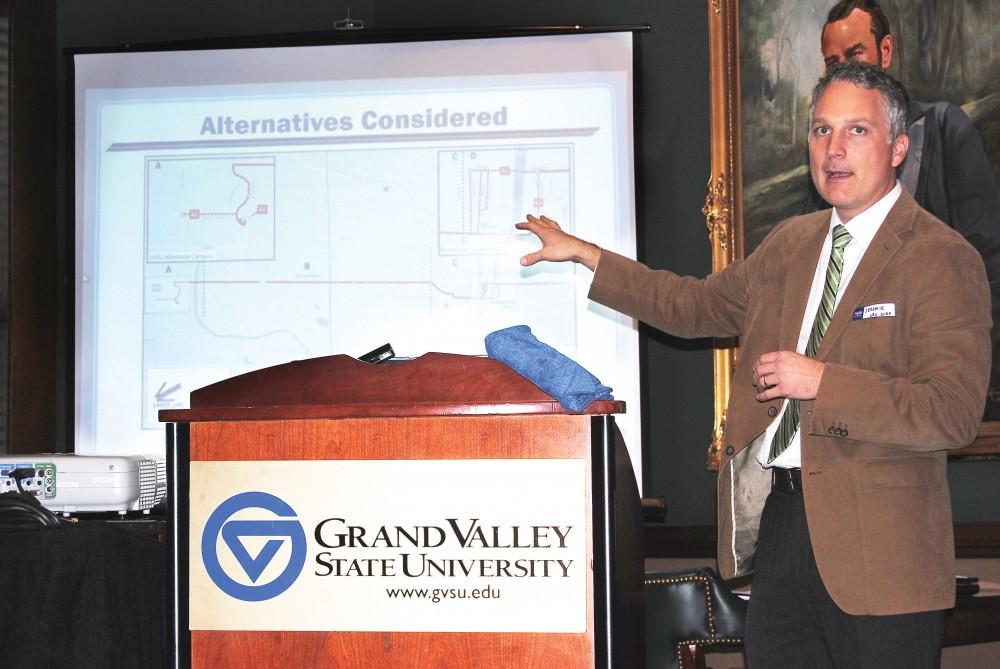Laker Line results show interest in higher-capacity buses

GVL/Brianna Olson Jeromie Winsor
Oct 16, 2014
The Laker Line Study, a yearlong effort to determine how best to improve the bus system at Grand Valley State University, held its final results meeting on Tuesday, Oct. 14.
Over the past 10 years, student commuters at GVSU have seen a rise in public transportation participation. The Rapid’s Route 50, which connects GVSU’s Allendale and Pew campuses, currently transports 9,000 to 10,000 students each day, and that number is on the rise.
In the past, the reaction has been to add to the number of buses to increase frequency. However, it is no longer feasible to simply add more vehicles. For a new system to be put in place, however, the Laker Line Study has to show there is a need.
Tuesday’s meeting was the third and final community event. The results of the study were shown and explained to attendees before the next phase of the project begins.
“We want the public to give feedback. That’s the most important, critical part of this process,” said Nicholas Monoyios, the project manager for the Laker Line study.
Monoyios said the way to get funding is to demonstrate to the Federal Transit Administration that the plan is not only feasible and beneficial, but also supported by the public.
“We need to know what the public thinks. That’s what makes this worthwhile,” he said. “It’s what the public wants, it’s what businesses want. It’s not a designer sitting in a cubicle.”
The three-hour event was held open-house style, guests could show up at any time to ask questions and view information about the plan. Presentations were given each hour by consultants who detailed the big picture of the project, including the purpose of the study, the alternative solutions considered and the progress of the project thus far.
Jeromie Winsor, a transportation planner with URS Corp., conducted the presentations and led the question and answer sessions.
“We looked at a pretty broad range of transit modes,” Winsor said. “(The plan involves) the use of higher capacity buses (and) optimized station locations.”
Monoyios added that higher capacity buses could decrease the university’s costs.
“Grand Valley State University could save money,” Monoyios said. “Instead of five regular buses you could have four that fit more people.”
Members of the community, including GVSU students, attended the event to learn more about the project and ask questions. When asked by one student about the effect the new plan would have on cost to students, Winsor responded that there would be no cost.
Student Eric Cousins, the vice president for campus affairs of Student Senate pointed out that this is a five-year plan, and asked if there were any immediate, temporary solutions in the works such as additional buses. According to Monoyios, they can’t justify having more buses as too often buses leave overflowing with passengers, only for the next one to have only five or 10 people riding.
“It’s great community building,” Monoyios said of the meeting.
Many students who have been involved in the study will not be students by the time the system is put into place. Monoyios applauded them for being involved to represent the next generation of students.
For more information, go to www.lakerline.org.





















